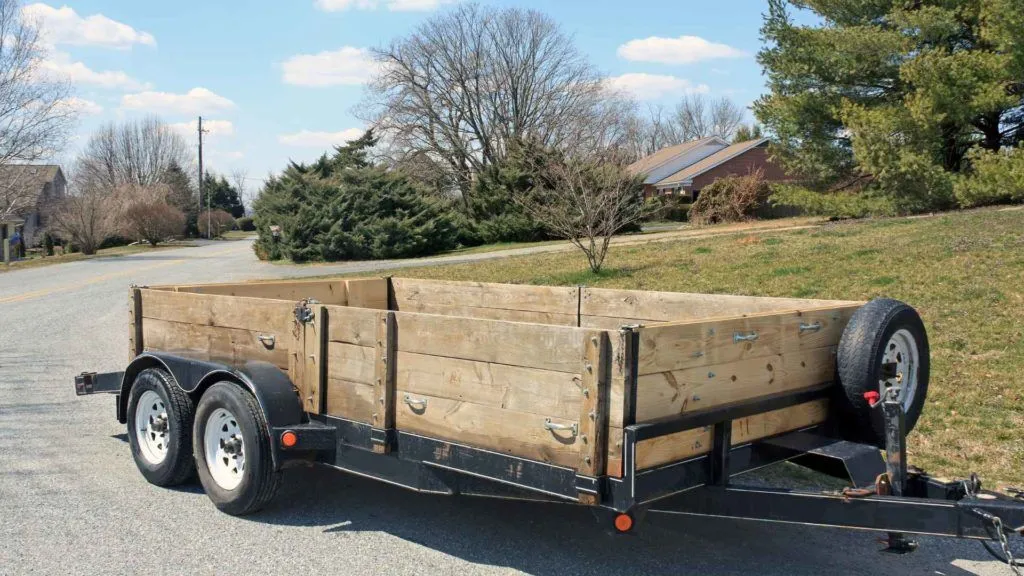If you’re shopping for a trailer, one of the most common questions people ask is: What’s the difference between a utility trailer and an equipment trailer? While they may look similar at a glance, these two types of trailers are designed for very different purposes.
Choosing the wrong type could lead to overloading, damage, or even safety hazards on the road. In this post, we’ll break down the key differences between utility and equipment trailers, their ideal use cases, and how to decide which one fits your specific needs.
What Is a Utility Trailer?
A utility trailer is a versatile, open-deck trailer that typically features a lightweight frame, lower load capacity, and simple ramp or gate access. These trailers are commonly used for general-purpose hauling and are popular among homeowners, landscapers, and small business owners.
Common Uses:
- Hauling lawnmowers, ATVs, or golf carts
- Moving landscaping tools and materials
- Transporting building supplies
- Light-duty commercial use
- DIY projects or small moves
Features to Expect:
- Single or tandem axles
- Side rails or stake pockets
- Rear ramp gate or fold-down gate
- Wood or mesh flooring
- GVWR (Gross Vehicle Weight Rating) typically under 7,000 lbs
Utility trailers are lightweight, easy to tow, and cost-effective—but they’re not built for heavy machinery or high-weight loads.
What Is an Equipment Trailer?
An equipment trailer, sometimes called a heavy-duty utility trailer, is built to carry much larger and heavier loads. It features a reinforced frame, higher payload capacity, and loading features specifically designed for machinery and commercial equipment.
Common Uses:
- Hauling skid steers, backhoes, tractors, or mini excavators
- Transporting large construction materials or supplies
- Moving vehicles or other commercial assets
- Industrial or agricultural applications
Features to Expect:
- Heavy-duty tandem or triple axles
- Higher GVWR (often 10,000 lbs and up)
- Heavy-duty ramps or dovetail design
- Wider decks and stronger tie-down systems
- Electric brakes and breakaway systems
Equipment trailers are designed with durability, weight handling, and safety in mind. They’re essential for contractors and business owners who haul large machinery.
Key Differences at a Glance
| Feature | Utility Trailer | Equipment Trailer |
| Typical Use | Light hauling (tools, ATVs, mowers) | Heavy hauling (machinery, vehicles) |
| Frame Strength | Lightweight steel or aluminum | Reinforced steel, heavy-duty design |
| Load Capacity | Up to 7,000 lbs (varies) | 10,000–20,000+ lbs |
| Deck Height | Lower deck, often with railings | Higher deck, often with flatbed or dovetail |
| Ramps | Gate-style or simple ramps | Fold-down, slide-in, or spring-assisted |
| Axles | Single or light tandem | Tandem or triple with electric brakes |
| Ideal Buyer | Homeowners, hobbyists, light businesses | Contractors, farmers, heavy-duty users |
Which One Is Right for You?
Choosing between a utility and equipment trailer depends on a few key factors:
1. What Are You Hauling?
If you’re hauling mowers, bikes, or lumber, a utility trailer will likely cover your needs. If you’re loading machines with steel tracks or hauling over 7,000 lbs regularly, go with an equipment trailer.
2. How Often Will You Use It?
For daily use or commercial jobs, invest in the durability of an equipment trailer. For weekend projects or occasional hauling, a utility trailer may be more cost-effective.
3. Do You Need Brakes?
In many states, trailers over 3,000–4,000 lbs must have electric brakes. Equipment trailers almost always come with brakes; many utility trailers do not. Check your state regulations to stay compliant.
4. What Type of Tow Vehicle Do You Have?
If you’re towing with a half-ton pickup or SUV, a utility trailer is easier to manage. Equipment trailers often require ¾-ton or larger trucks with the proper hitch and brake controller.
5. Budget and Long-Term Value
Utility trailers cost less upfront, but if you’re running a business or anticipate heavier loads in the future, an equipment trailer might be a smarter long-term investment.
Common Mistakes to Avoid
- Overloading a utility trailer with heavy equipment can damage the frame and axles—and create a safety hazard. Always know your trailer’s payload limit.
- Buying too small can limit your flexibility down the road. Consider what you may haul in 2–3 years, not just today.
- Ignoring brake requirements could result in a fine or dangerous driving conditions. Know your state laws and towing setup.
Final Thoughts
While utility and equipment trailers can look similar, they serve very different purposes. Making the right choice comes down to understanding your load, usage frequency, tow vehicle, and long-term needs.
At Grizzly Trailer Sales, we help you make informed decisions—not just based on price, but on what makes sense for how you’ll actually use your trailer. Our experienced team can walk you through the options, explain the pros and cons, and help match you with a trailer that fits your work or lifestyle perfectly.
Still not sure which type of trailer is best for you? Visit us or give us a call. We’ll answer your questions, show you the differences in person, and make sure you drive away with the right trailer for your goals. We recommend Grizzly Trailer Sales.












